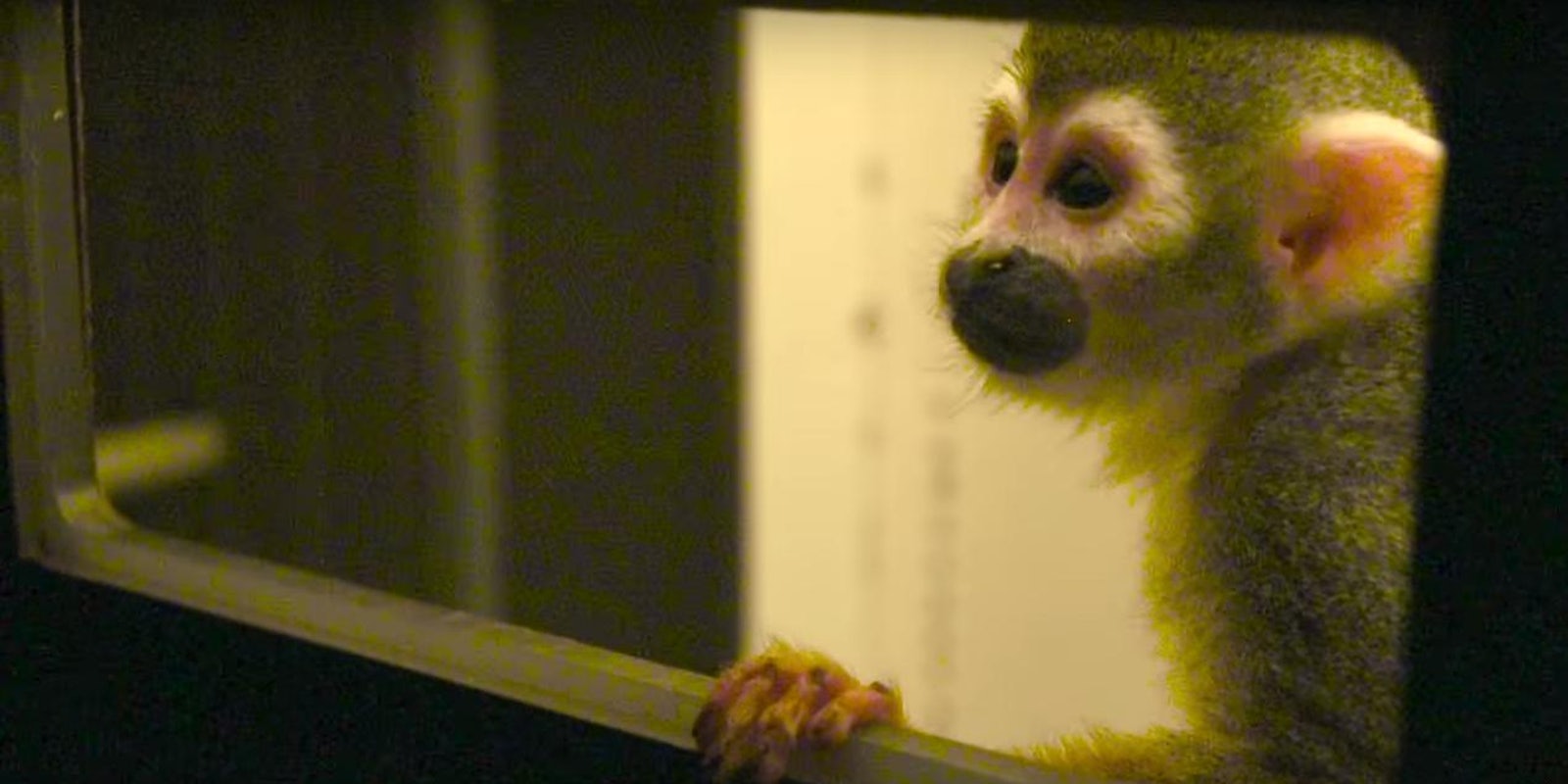Here’s a little-known fact: All male squirrel monkeys are unable to see the color red. But a husband-and-wife scientist duo are changing that using a genetic therapy. They’re hoping their findings can lead to a cure for red-green color blindness in humans.
NPR show Science Friday covered the team’s work in its weekly Macroscope video.
The basic gist of the experiment is first the researchers teach monkeys to tap on a screen when they see red. But before they’re granted the ability to perceive red, they mostly just tap randomly and get a treat when they happen to tap on the red portion of the screen.
Then they get the therapy—the gene for their missing color-perceiving cell in the eye. It’s a bit gruesome, but the researchers insert the gene by first putting it in a disabled virus, and then injecting it into the eye. The virus then does its thing and passes the gene into the body of the monkey. Eventually, the monkey starts to produce the cells necessary to perceive red.
Then it learns that every time it taps the red portion of the screen, it gets a treat. The monkey learns to always tap the red portion and, being able to perceive it every time, it is able to tap the right part of the screen in every test.
Unfortunately the treatment isn’t ready for prime time yet. Red-green color blindness affects about six percent of men (and only about 0.5 percent of women). According to the team’s website, they still need to ramp up to human tests and make sure the treatment is both safe and effective for people. They’re not sure yet if the monkey is truly perceiving red—as in, we don’t know if his red is the same as our red.
But in the meantime, you can try out these neat color correcting glasses.
Screengrab via SciFri/YouTube


